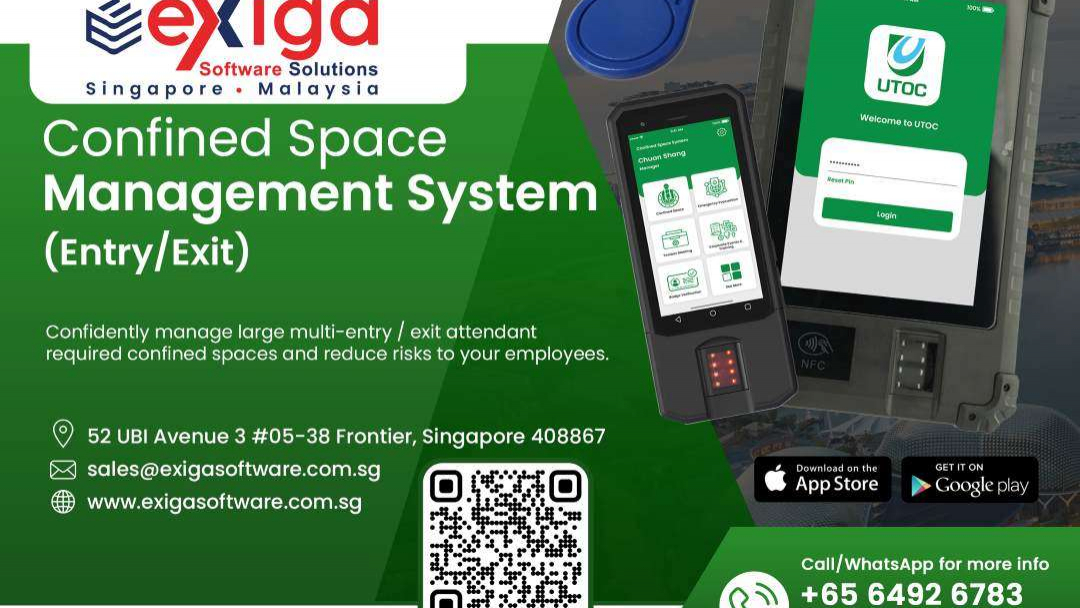In the dense urban landscape of Singapore, construction, maintenance, and utility work are a constant. This often involves working in confined spaces—areas like manholes, tanks, silos, and pits that are not designed for continuous occupancy and have limited means of entry and exit. While Singapore's Workplace Safety and Health (WSH) regulations for confined spaces are among the most stringent in the world, compliance alone is not enough to prevent tragedy. The true sentinel of safety in these environments is not a one-time check but a dynamic, continuous monitoring system.
Fatal accidents and serious injuries in confined spaces, while on the decline, still occur. Data from the Ministry of Manpower (MOM) and the Workplace Safety and Health (WSH) Council consistently highlight the dire consequences of neglecting proper safety protocols. The primary culprits in these incidents are often invisible: oxygen deficiency, flammable gases, and toxic vapors. This is where continuous monitoring becomes the lifeblood of a safe confined space operation. It's the difference between a static safety plan and a living, breathing safety ecosystem.
The Foundation: The Confined Space Entry Permit
Singapore's regulatory framework, particularly the WSH (Confined Spaces) Regulations 2009, establishes a clear, mandatory protocol for confined space entry. At the heart of this system is the Confined Space Entry Permit. This document is a critical first step, a formal authorization that outlines the identified hazards, the required control measures, and the roles of all personnel involved, including the Confined Space Safety Assessor, the Authorized Manager, and the Entrants.
Before any worker is allowed to enter, the Confined Space Safety Assessor must conduct a thorough evaluation of the space's atmosphere from the outside using a properly calibrated instrument. This initial test checks for a safe level of oxygen (between 19.5% and 23.5% by volume), and the absence of flammable and toxic gases. If the initial test results are safe, the permit is issued, allowing work to proceed.
The Crucial Next Step: Continuous Monitoring
The entry permit, however, is not a license to work without caution. Atmospheric conditions inside a confined space can change rapidly and unpredictably. A pocket of trapped toxic gas might be disturbed, a nearby chemical reaction could produce hazardous fumes, or the presence of a worker could quickly deplete oxygen levels. This is why continuous monitoring, mandated by Singapore's regulations, is the critical second phase.
Modern multi-gas detectors are the primary tools for continuous monitoring. Worn by every entrant, these devices are designed to provide a constant stream of atmospheric data. They are equipped with sensors that simultaneously measure the four most common confined space hazards:
Oxygen (O₂): To detect both deficiency (which can lead to asphyxiation) and enrichment (which increases fire risk). Flammable Gases (LEL): To monitor for combustible gases like methane, which can ignite with catastrophic results. Hydrogen Sulfide (H₂S): A highly toxic and often deadly gas with a characteristic rotten egg smell at low concentrations, but which dulls the sense of smell at higher, more dangerous levels. Carbon Monoxide (CO): A silent killer, this toxic gas is odorless and can cause severe illness or death.
These portable gas detectors are equipped with audible, visual, and vibrating alarms that trigger instantly if a hazardous condition is detected. This immediate notification is crucial for a timely evacuation.
The Role of the Attendant and a Cohesive Safety Plan
Continuous monitoring is not a solitary effort. It is a key element within a broader safety ecosystem that relies on communication and clear roles. The Confined Space Attendant, who remains outside the space, is a vigilant sentinel. Their duty is to maintain constant verbal and visual contact with the workers inside. They are the first line of defense, ready to initiate a rescue plan the moment a gas monitor's alarm sounds or a worker appears to be in distress.
Furthermore, a robust emergency plan must be established before any entry begins. This plan details rescue procedures, identifies a designated rescue team, and ensures all necessary equipment, such as safety harnesses and retrieval systems, are readily available and in good working order. Regular drills are essential to ensure that everyone, from the entrant to the rescue team, knows their role and can respond effectively in a high-stress situation.
The Cost of Inaction
Neglecting continuous monitoring can have devastating consequences, not only for the lives of workers but also for businesses. In Singapore, non-compliance with WSH regulations can lead to severe penalties, including hefty fines and even imprisonment. Beyond the legal and financial repercussions, a workplace incident can severely damage a company's reputation, eroding trust among clients and employees.
By prioritizing continuous monitoring, businesses demonstrate an unwavering commitment to their most valuable asset: their people. It is a proactive investment in a culture of safety that goes beyond mere compliance. It is the recognition that safety is a shared responsibility, a dynamic process that demands constant vigilance. In a world where one lapse in judgment can lead to a lifetime of regret, continuous monitoring is the ever-watchful eye that ensures every worker who enters a confined space returns home safely at the end of the day.







